Hazard Mitigation & Adaptation Plans
The Resilience Program offers local governments developing/updating hazard mitigation plans the best resources available for determining: how to craft a successful plan, the requirements for a FEMA-approved Local Hazard Mitigation Plan and best-practice strategies for mitigating specific hazards.
Hazard Mitigation and Climate Adaptation: Planning for Resilience
The purpose of mitigation planning is to identify local policies and actions that can be implemented over the long term to reduce risk and future losses from hazards. Hazard Mitigation Plans and Climate Adaptation plans identify the strategies, policies and actions a community can take to reduce the risks that regional natural hazards pose to a community. These plans help characterize the risks and identify the strategies that are needed so that a community can absorb a shock and bounce back more quickly after a hazard event.
Proactive mitigation plans reduce risk and create safer, more disaster-resilient communities. Mitigation/Adaptation plans:
- Protect public safety and prevent loss of life and injury;
- Reduce harm to existing and future development;
- Prevent damage to a community’s unique economic, cultural and environmental assets;
- Minimize operational downtime and accelerate recovery of government and business after disasters;
- Reduce the costs of disaster response and recovery and the exposure to risk for first responders;
- Help accomplish other community objectives, such as leveraging capital improvements, infrastructure protection, open space preservation and economic resiliency.
Hazard Mitigation Plans can be very specific to regional hazards or part of the safety and/or housing element of a jurisdiction’s general plan, and are required to be updated at specified intervals.
Local Planning
Local governments have the responsibility to protect the health, safety and welfare of their citizens. Proactive mitigation policies and actions help reduce risk and create safer, more disaster-resilient communities.
Upcoming Bay Area Resilience Planning (Hex Map)
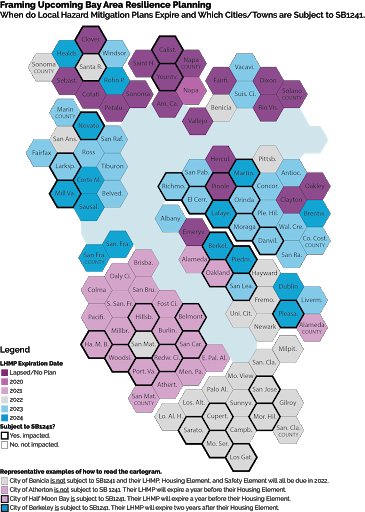
This comprehensive resource illustrates the known status of Local Hazard Mitigation Plans (LHMP) in the nine-county Bay Area, indicating when the plan needs to be updated for each jurisdiction. It is helpful for considering how LHMP updates coordinate with other planning efforts. Communities updating LHMPs may also find it helpful to know which local communities are also doing this work at the same time.
How to Craft a Successful Plan
Mitigation is most effective when it is based on a comprehensive, long-term plan that is developed before a disaster occurs. These resources offer guidance and direction on how to craft a successful plan.
FEMA Local Mitigation Planning Handbook

This handbook provides guidance to local governments on developing or updating hazard mitigation plans to meet the FEMA requirements to become eligible for FEMA Hazard Mitigation Assistance grant programs; and offers practical approaches and examples for how communities can engage in effective planning to reduce long-term risk from natural hazards and disasters.
Topics include how to:
- Build a planning team;
- Conduct a risk assessment;
- Develop a mitigation strategy;
- Review and adopt the plan.
Requirements for a FEMA-approved LHMP
Local Mitigation Plans must be updated at least once every five years in order to continue to be eligible for FEMA hazard mitigation project grant funding. These resources help ensure compliance with FEMA regulations and requirements.
Local Mitigation Plan Review Guide
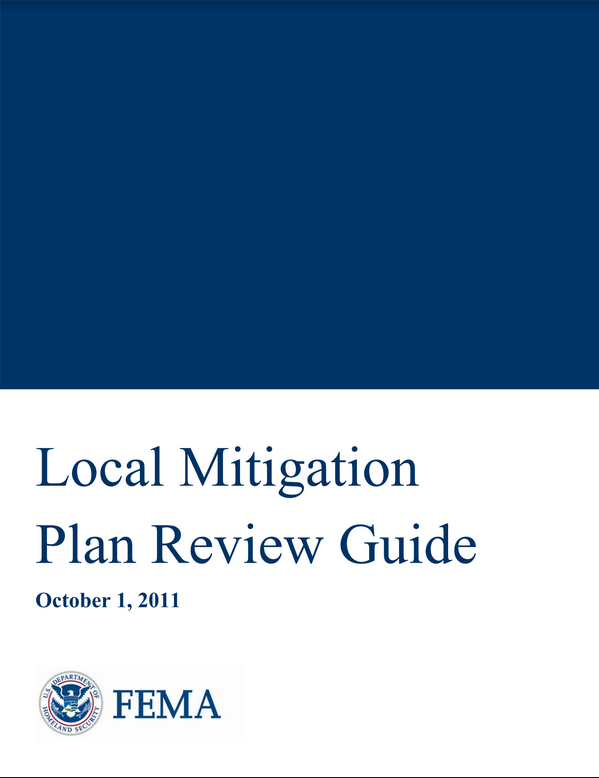
This guide can be used as a checklist to ensure your plan meets all Federal LHMP requirements. It offers a plan review tool, plan review procedure and regulation checklist, along with guidance on how to use the materials provided.
Mitigation/Adaptation Strategies
Communities have developed a range of strategies for adapting to and mitigating risk, including risk related to earthquake, wildfire and climate change. This section offers a compendium of strategies communities have implemented.
Stronger Housing, Safer Communities
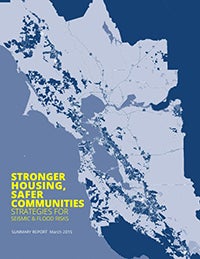
In the Bay Area, retaining housing is crucial to expediting and ensuring an effective disaster recovery. Limiting catastrophic housing damage and keeping residents in their homes not only helps people who may lack the resources to effectively recover from a disaster, but keeps communities intact. This manual focuses on earthquake and flood to better characterize both the structural and community components of vulnerability, as well as to develop strategies to address these specific vulnerabilities. This resource guide helps users:
- Understand the characteristics of San Francisco Bay Area housing and communities that increase vulnerability to earthquakes and sea level rise related flooding;
- Identify and assess housing and community vulnerability at regional and community scales and;
- Develop strategies that reduce housing and community vulnerability to help the region meet its resilience, sustainability, prosperity, and equity goals.
Wildfires Strategy Spreadsheet
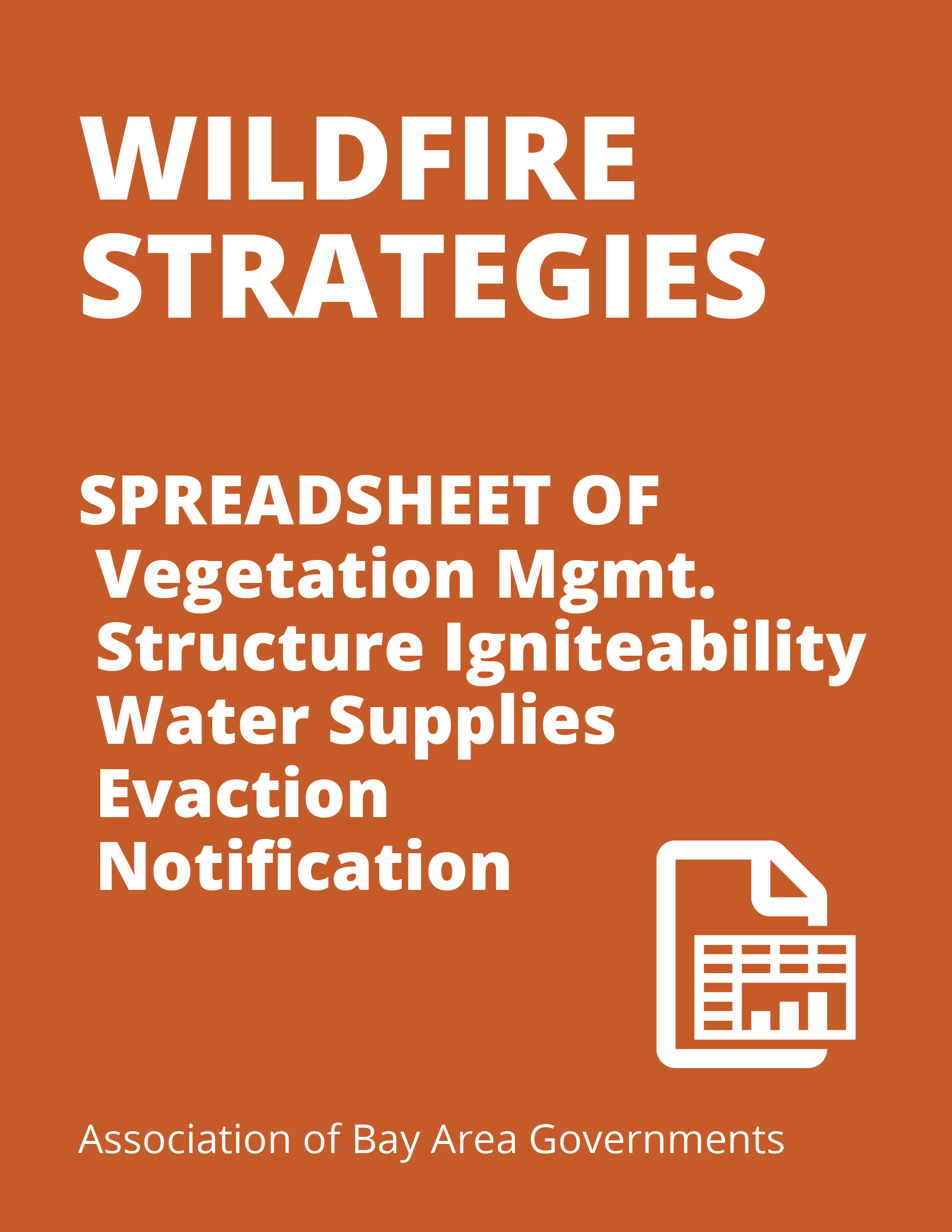
An extensive inventory of local wildfire mitigation and adaptation measures, featuring 360 strategies searchable by jurisdiction and/or type, this resource offers a wealth of options to start with in developing local hazard mitigation plans or other fire hazard planning documents.
ART Strategy Resources for Sea Level Rise
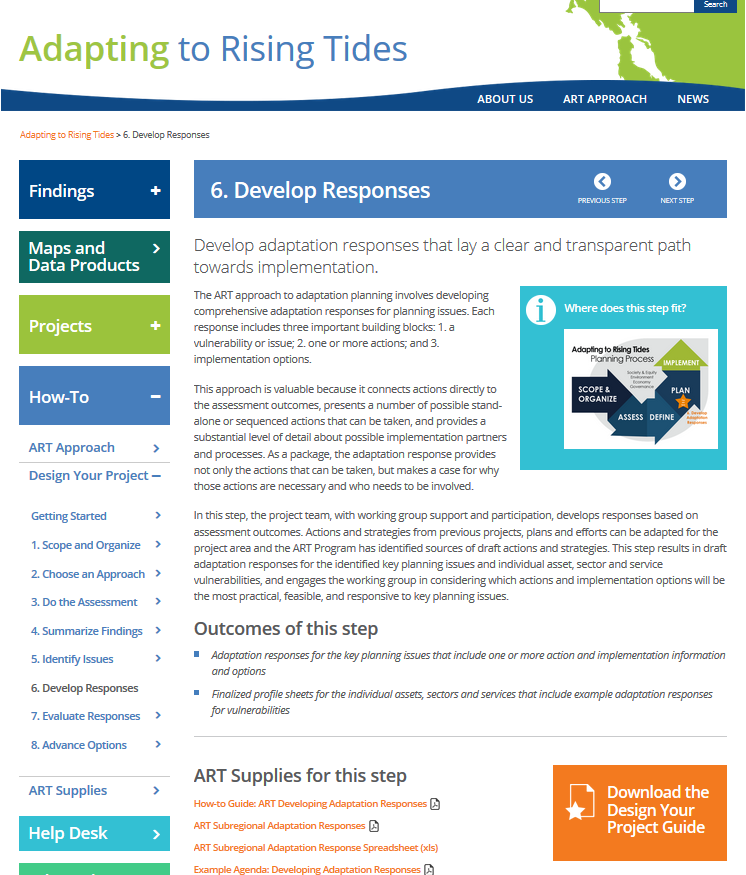
The “Development” section of the Adapting to Rising Tides Planning Process, which offers resources useful from scoping to implementation, this web page presents a set of resources communities can use to decide which mitigation and adaptation actions to take in relation to sea level rise. The tools offered here include the ART Subregional Adaptation Response Spreadsheet (xls), which lists strategic approaches from past efforts.
Mitigation Ideas: A Resource for Reducing Risk to Natural Hazards
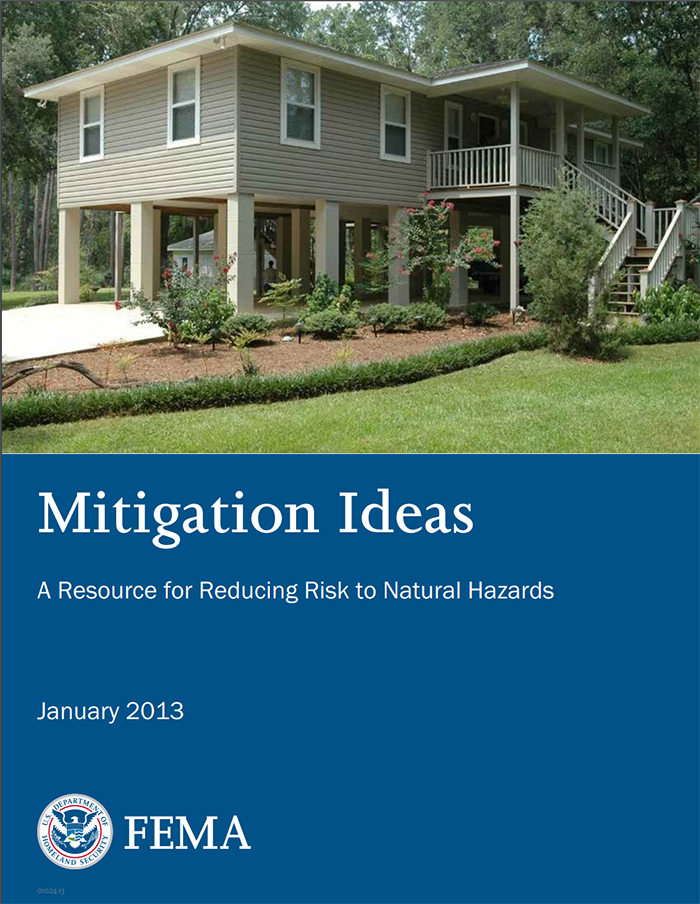
A resource communities can use to identify and evaluate a range of potential mitigation actions for reducing natural risk from natural hazards and disasters. Relevant hazards considered include:
- Drought
- Earthquake
- Extreme Temperatures
- Flood
- Landslide
- Sea Level Rise
- Tsunami
- Wildfire
- Others (Erosion, Subsidence, Severe Storms and more)
Past Plans
Past plans provide resources for jurisdictions seeking to track their own past priorities and historic concerns, as well as a tool for understanding local planning in the context of state priorities.
2018 California State Hazard Mitigation Plan (CalOES)
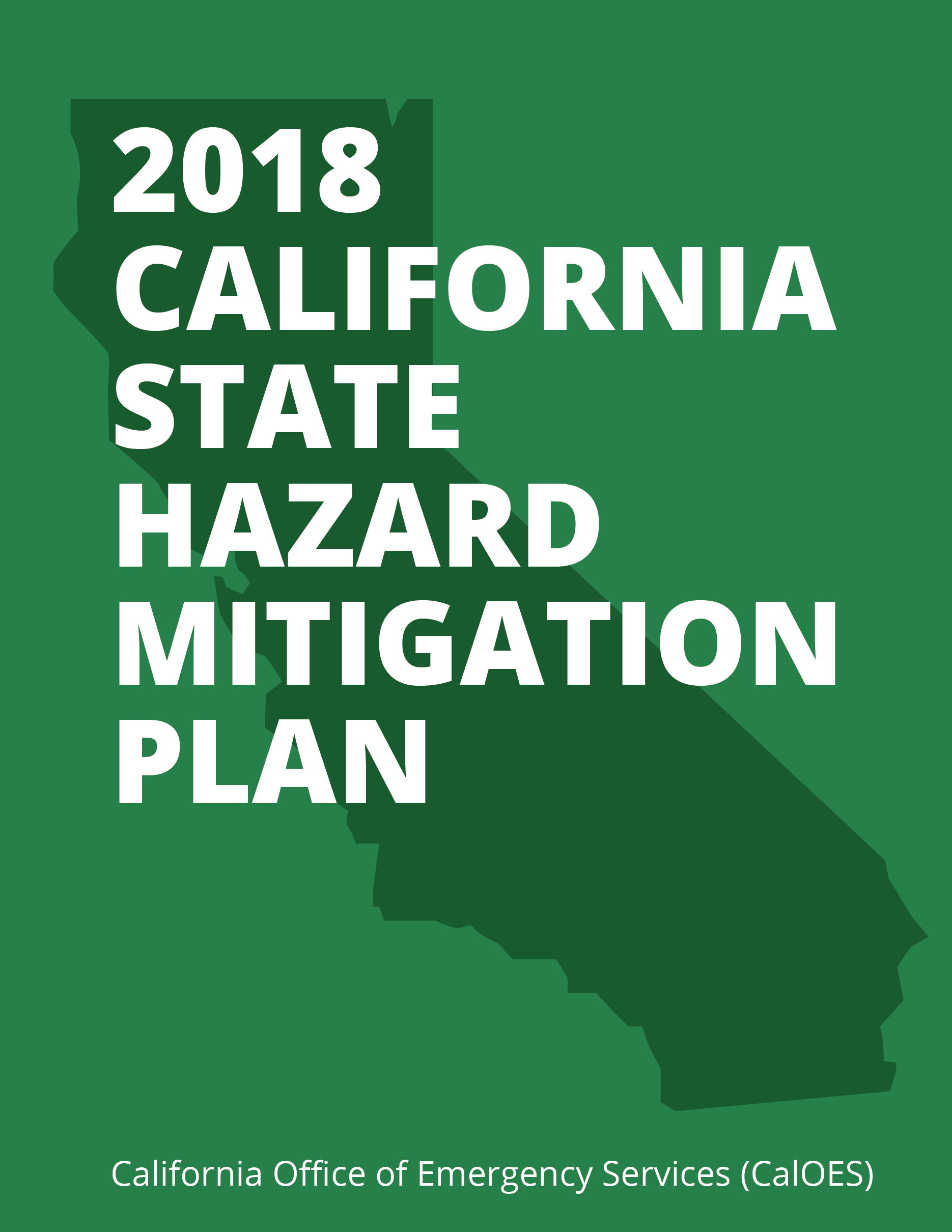
The State of California updates the State Hazard Mitigation Plan every five years. It is a resource that can be used to align local hazard mitigation efforts with state priorities.
2011 Bay Area Regional Hazard Mitigation Plan

In 2011, ABAG led a regional, multi-jurisdictional hazard mitigation plan with 88 local governments annexing onto the plan. The plan expired in 2016. Local jurisdictions may find this document and its annexes useful for referencing their own past priorities.
Regional Planning
Anticipating post-disaster issues and acting now to support post-disaster recovery is essential. Communities can work in concert with mitigation and disaster response initiatives to create a more sustainable and resilient region.
Regional Resilience Initiative: Policy Agenda For Recovery
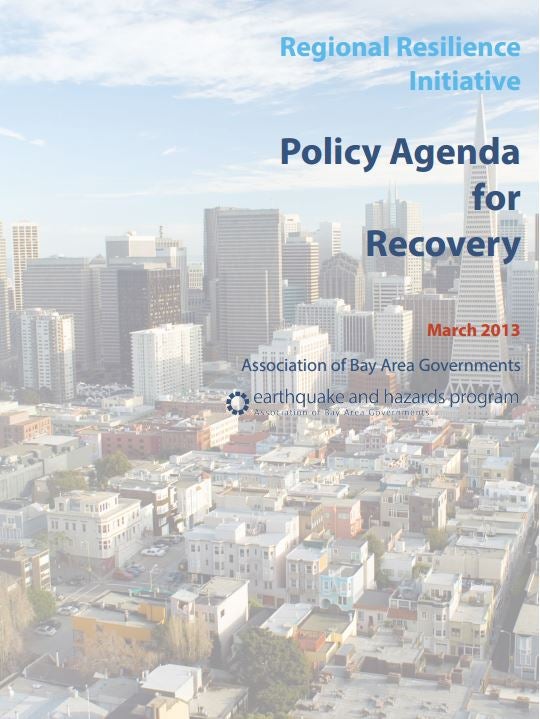
This resource is the result of a 2013 ABAG policy and planning effort to establish region-wide priorities and policies for region-wide disaster planning and response. It incorporates papers on the following policy topics:
- Governance
- Housing
- Infrastructure
- Economy and
- Business
Plan Bay Area 2050
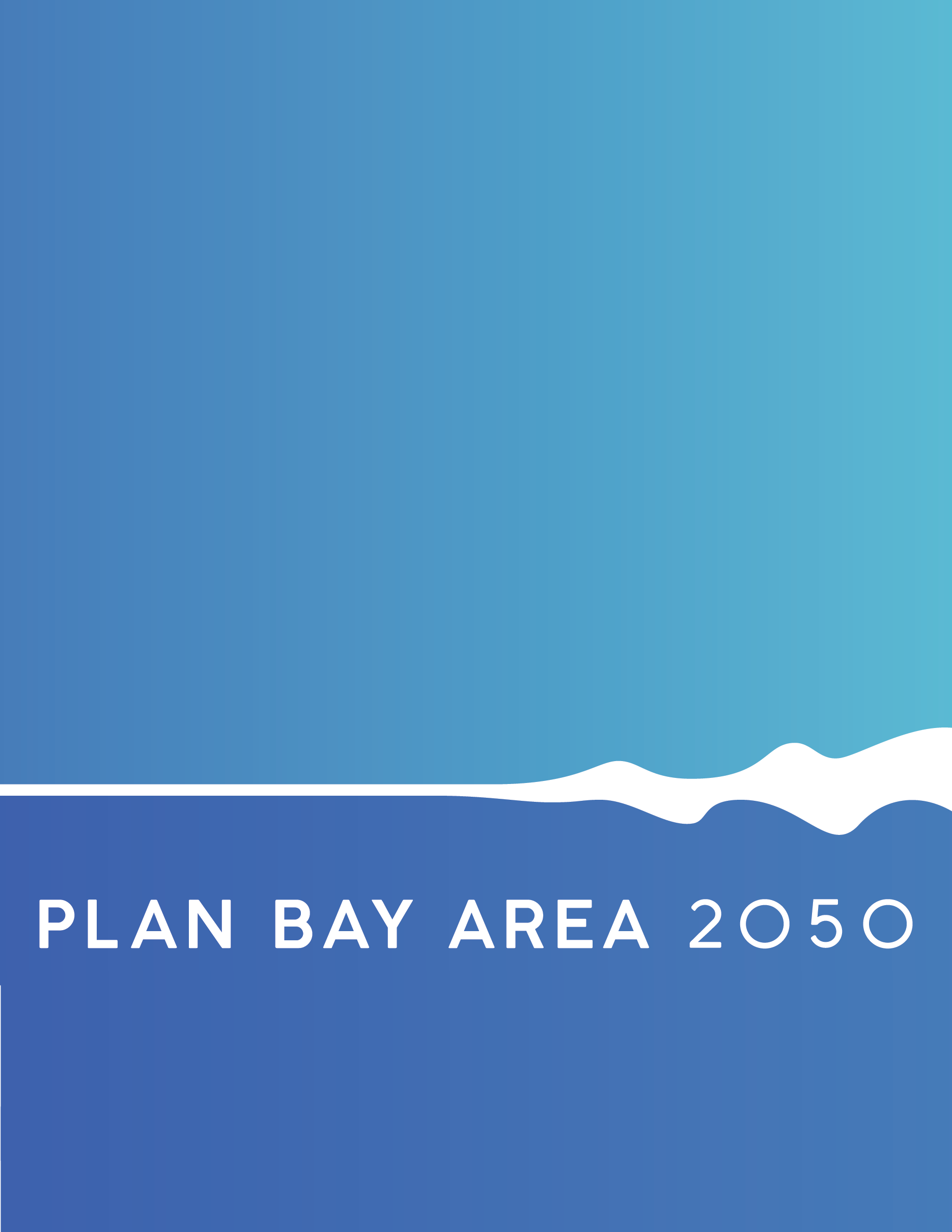
Plan Bay Area 2050 is the regional long-range plan charting the course for the future of the nine-county San Francisco Bay Area. Plan Bay Area 2050 focuses on four key elements—the economy, the environment, housing and transportation—and identifies a path to make the Bay Area more equitable for all residents and more resilient in the face of unexpected challenges. Building on the work of the Horizon initiative, this new regional plan outlines 35 strategies to advance resilience through the year 2050, while simultaneously striving to meet and exceed federal and state requirements. The plan includes strategies to adapt to sea level rise and retrofit seismically- and wildfire-vulnerable homes. The Metropolitan Transportation Commission and the Association of Bay Area Governments adopted Plan Bay Area 2050 in October 2021.

